6 hardy succulents you can grow outside all year round – even in the UK
Swap thirsty annuals for these drought-loving showstoppers – they’ll thrive in your garden year-round with minimal fuss

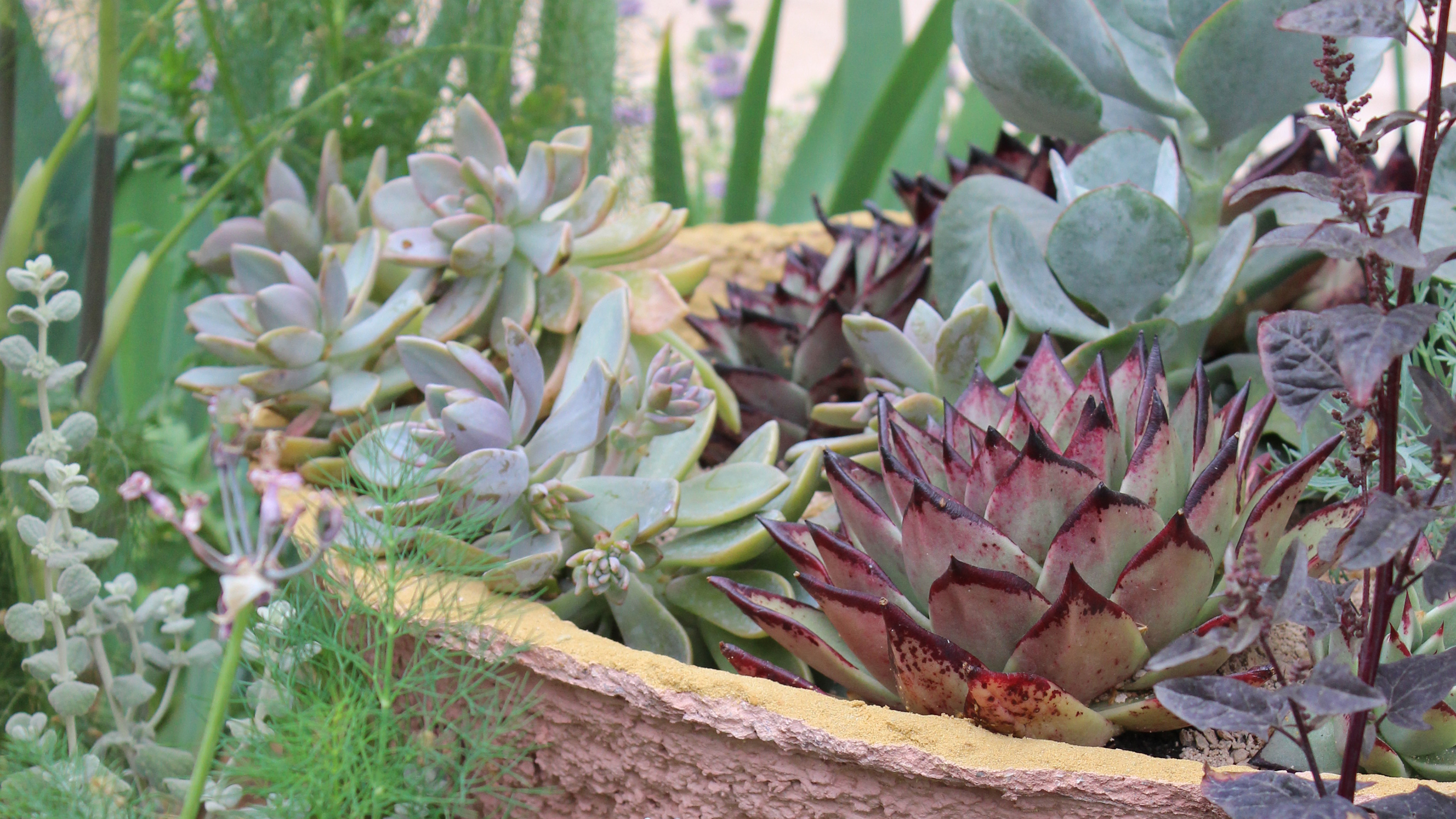
If you’re anything like me, succulents might have felt a bit intimidating at first – I definitely committed some heinous succulent care mistakes along the way. But did you know there’s a whole world of hardy succulents that will happily live outside all year, even through frost and snow?
I started experimenting with succulents after getting tired of patio pots that needed constant watering and still looked a bit sorry for themselves come mid-summer.
Now I’ve replaced them with hardy varieties, and honestly, I’ll never look back. They’re sculptural, low-maintenance, drought-tolerant and (when you pick the right types) totally hardy to UK winters.
Ready to transform your outdoor space with succulent garden ideas and minimal effort? Here are seven hardy varieties I recommend, especially for beginners.
1. Sempervivum (Houseleeks)
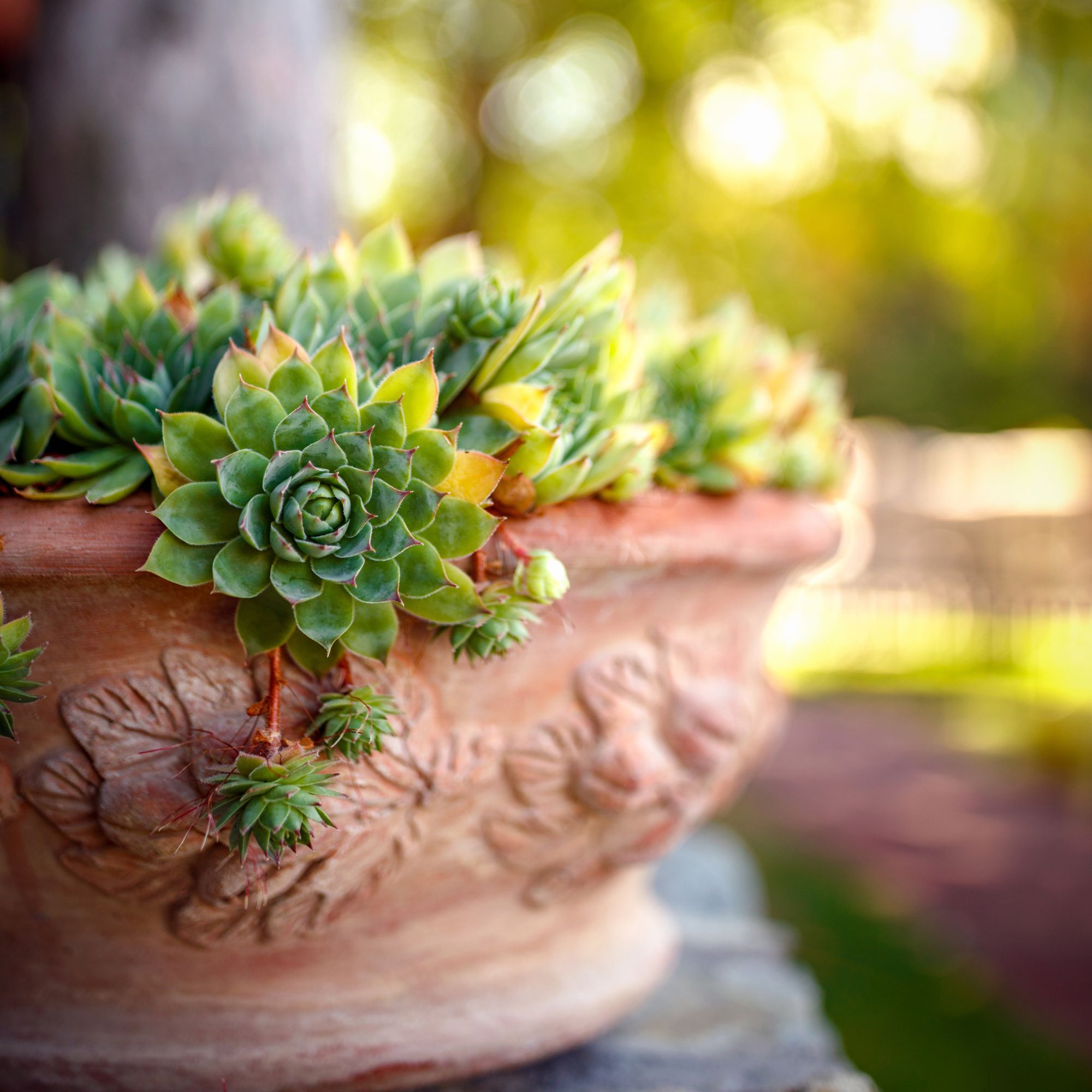
Sempervivums were my gateway into hardy succulents. These rosette-shaped plants come in all sorts of colours, from deep reds to silvery greens, and they’re practically indestructible.
They’ll grow in shallow soil, old troughs, broken teapots – anything, really, as long as it drains well. And they spread by producing baby plants (called offsets), so you’ll get more each year.
‘Sempervivums are one of the hardiest succulents, tolerating temperatures as low as -20°C,’ says Niamh Mullally, founder of Southwold Succulent Co. ‘They’re brilliant for beginners and provide colour and structure all year round.’
Sign up to our newsletter for style inspiration, real homes, project and garden advice and shopping know-how
Create a little collection of the different varieties, either as evergreen ground cover or in planters with this house leeks collection, £34.99 from Crocus.

Niamh Mullally is the founder and grower behind Southwold Succulent Co – the UK’s largest specialist nursery dedicated to hardy succulents. With over 25 years’ experience in the horticultural world, Niamh grows more than 300 varieties on site, including many rare and seed-grown plants.
The nursery is known for its innovative Starter Packs, Living Walls, Hardy Hanging Baskets and Gravel Garden Kits – all designed to make growing succulents easy, eye-catching and accessible for every gardener.
2. Sedum (Stonecrop)
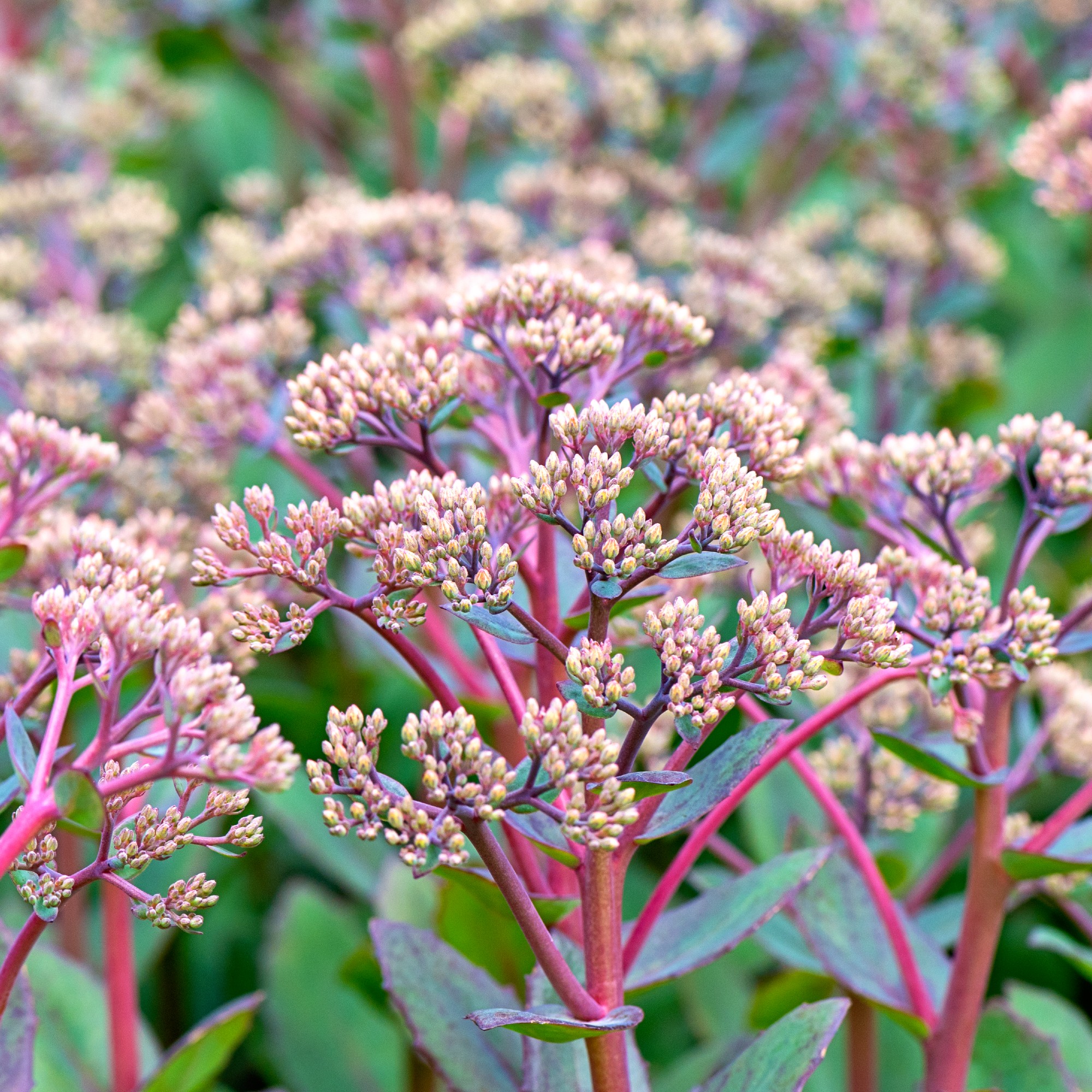
Learning how to grow Sedums was a major milestone in my gardening journey, especially the creeping groundcover types like Sedum spurium, from £7.99 at J.Parker's or the more upright Autumn Joy, which you can pick up at Primrose, from £9.99 for a 9cm pot, pictured above. They burst into flower in late summer and early autumn, attracting bees and butterflies like magnets.
The best part? They barely need any care. Just snip off the dead flowerheads in spring, and they’ll bounce right back.
‘Start with sedums and sempervivums,’ Niamh advises. ‘They’re low maintenance, look good year-round and are mostly hardy to -20°C.’
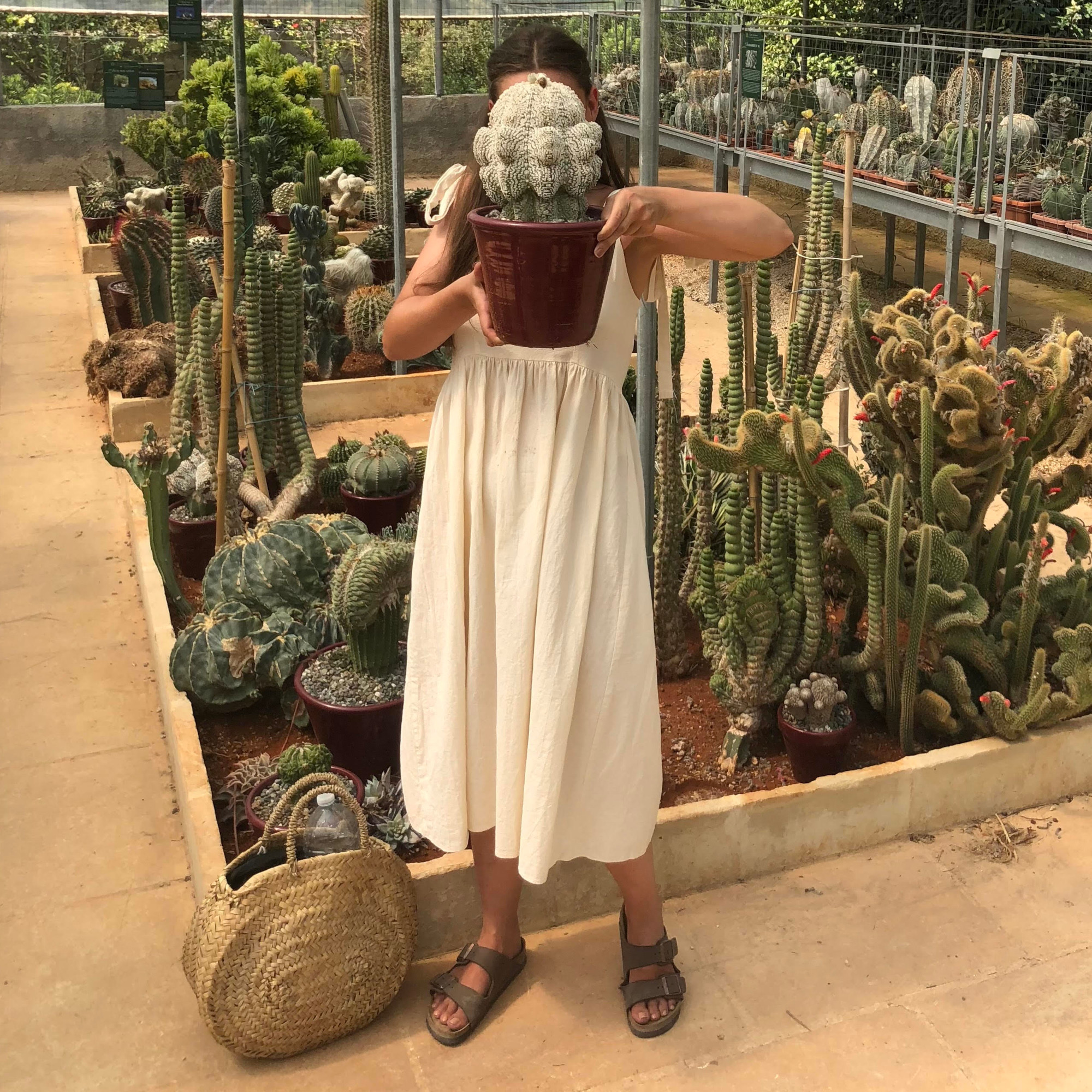
Amy has worked with cacti and succulents for many years as a designer and project manager on interior planting projects (the RHS, Sotheby's, Uniqlo, George Clarke's Amazing Spaces) and now spends her time further understanding the intricacies of drought tolerance, with experience in nursery production specialising in hardy exotics.
As a volunteer for the British Cactus and Succulent Society, she hopes to spread the joy of growing succulent plants to wider audiences (particularly younger people with limited growing spaces), and to promote the Society's charitable aims of education and conservation.
Whether you are an expert grower or a novice, or are just thinking of starting up the hobby, the Society will guide you all the way, with around 70 Branches throughout the UK meeting monthly. You will have the opportunity to meet other enthusiasts and to learn more about growing these amazing plants.
3. Delosperma (Ice Plant)
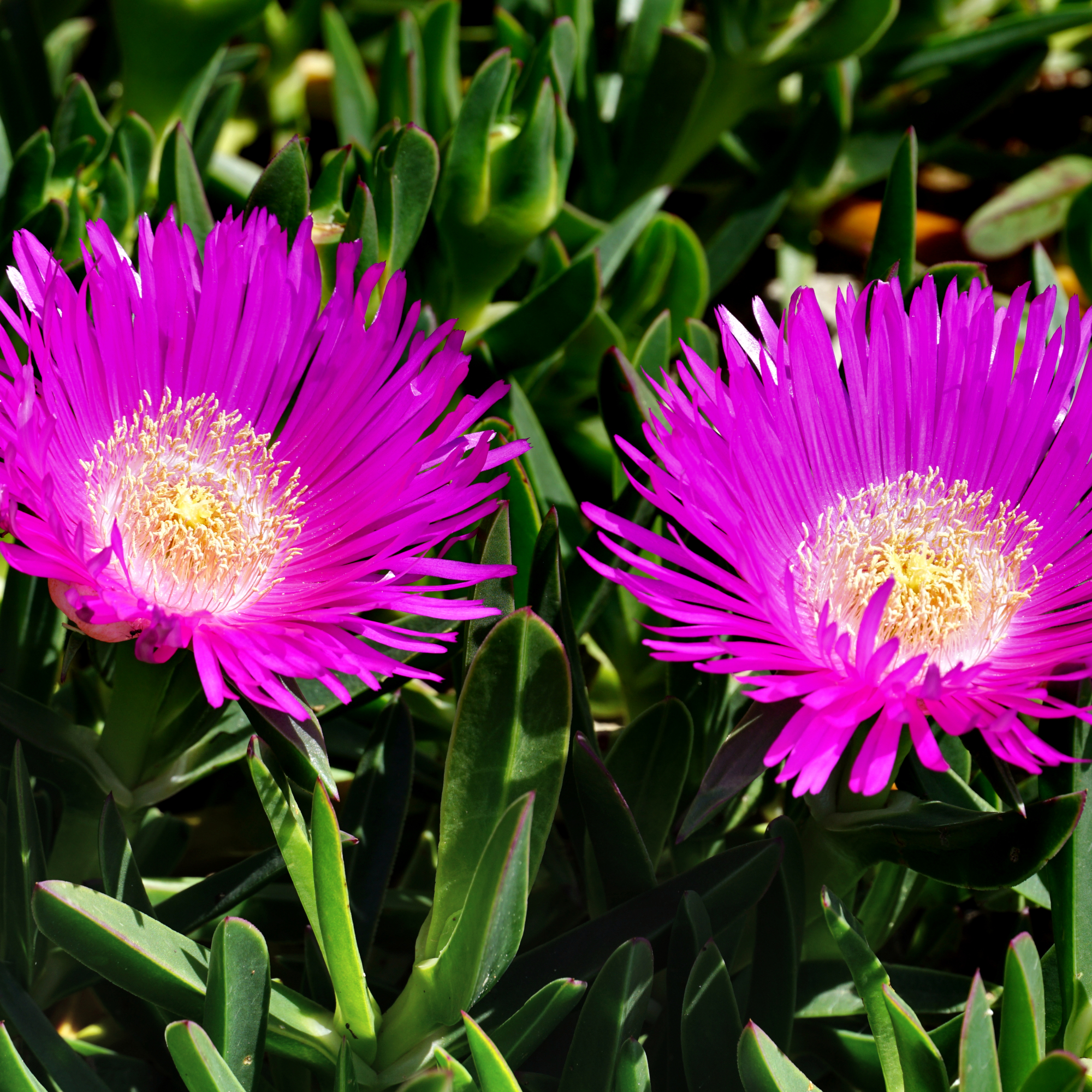
,I was blown away the first time my Delosperma cooperi flowered – the vivid pink blooms were like little jewels and just kept on coming. These tough little plants form a mat of foliage and are ideal for the front of sunny borders or trailing over walls.
‘Mixing hardy succulents like Sedum, Lampranthus, Sempervivum and Delosperma in your borders or pots gives a display that changes and flowers throughout the year,’ say Tom and Giulia. ‘It’s also a great way to add texture and colour with minimal upkeep.’
However, they do need a bit more care. ‘Delospermas need a dry winter,’ Niamh warns. So if you live in a particularly wet area, plant in pots and bring them under cover.
Amy adds: ‘Although some species can tolerate freezing temperatures in their native regions, the UK’s wetter climate often makes things trickier. Warmer areas and sheltered microclimates lend themselves to a wider selection of species. You’ll sometimes see giant Agave americana thriving in urban spots like London roundabouts. For most gardens, a careful selection is essential, and it’s worth considering the element of chance – a particularly cold and wet winter may cause losses in an arid bed, or it may not.’
You can pick up the same pink Delosperma Cooperi at Dobies, £19.99 for a one-litre pot, or a beautiful hybrid colour mix from Amazon, for £3.84 for 50 seeds.
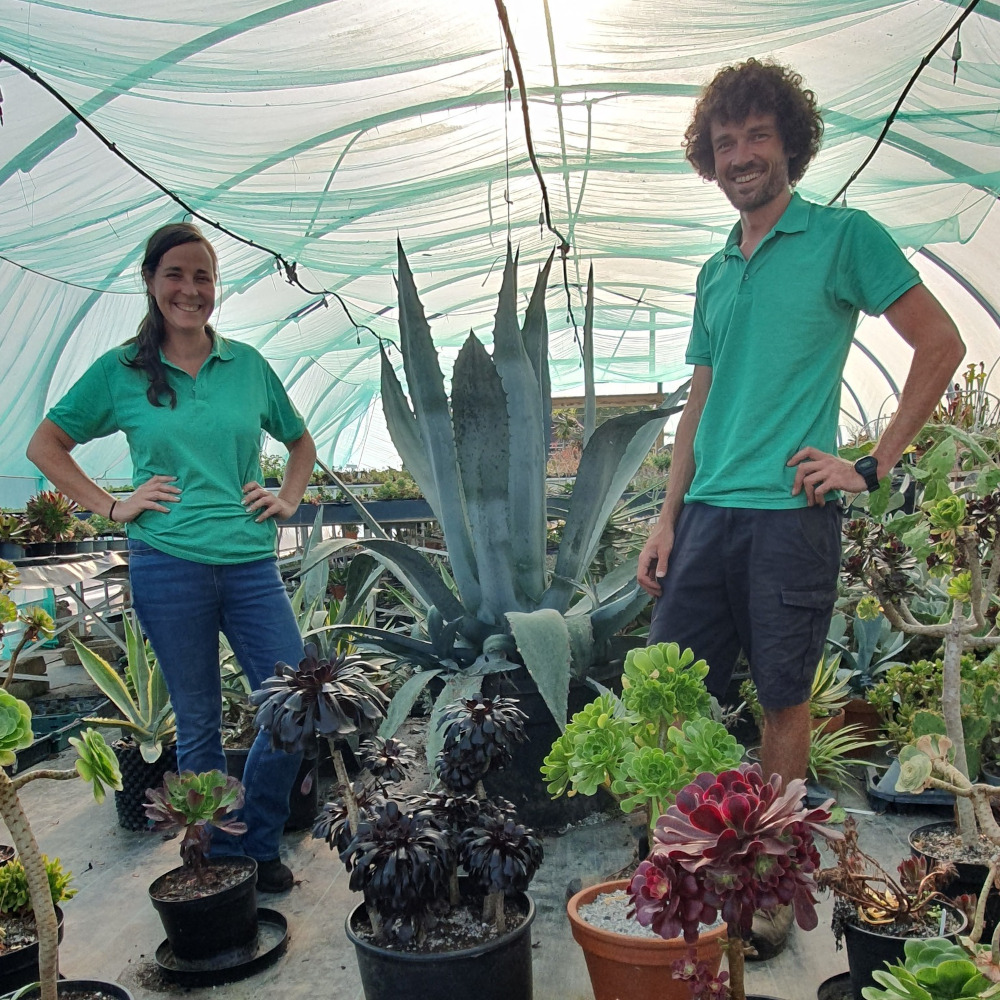
Tom and Giulia run Piccolo Plants Nursery, a specialist succulent nursery based in the coastal village of Branscombe in South East Devon.
They grow everything on site, offering a wide range of indoor and outdoor succulents for sale online, alongside larger statement plants available exclusively at the nursery.
With a hands-on approach and a focus on quality, Tom and Giulia are passionate about growing resilient, beautiful succulents that thrive in UK gardens.
4. Jovibarba (Hen and Chicks)
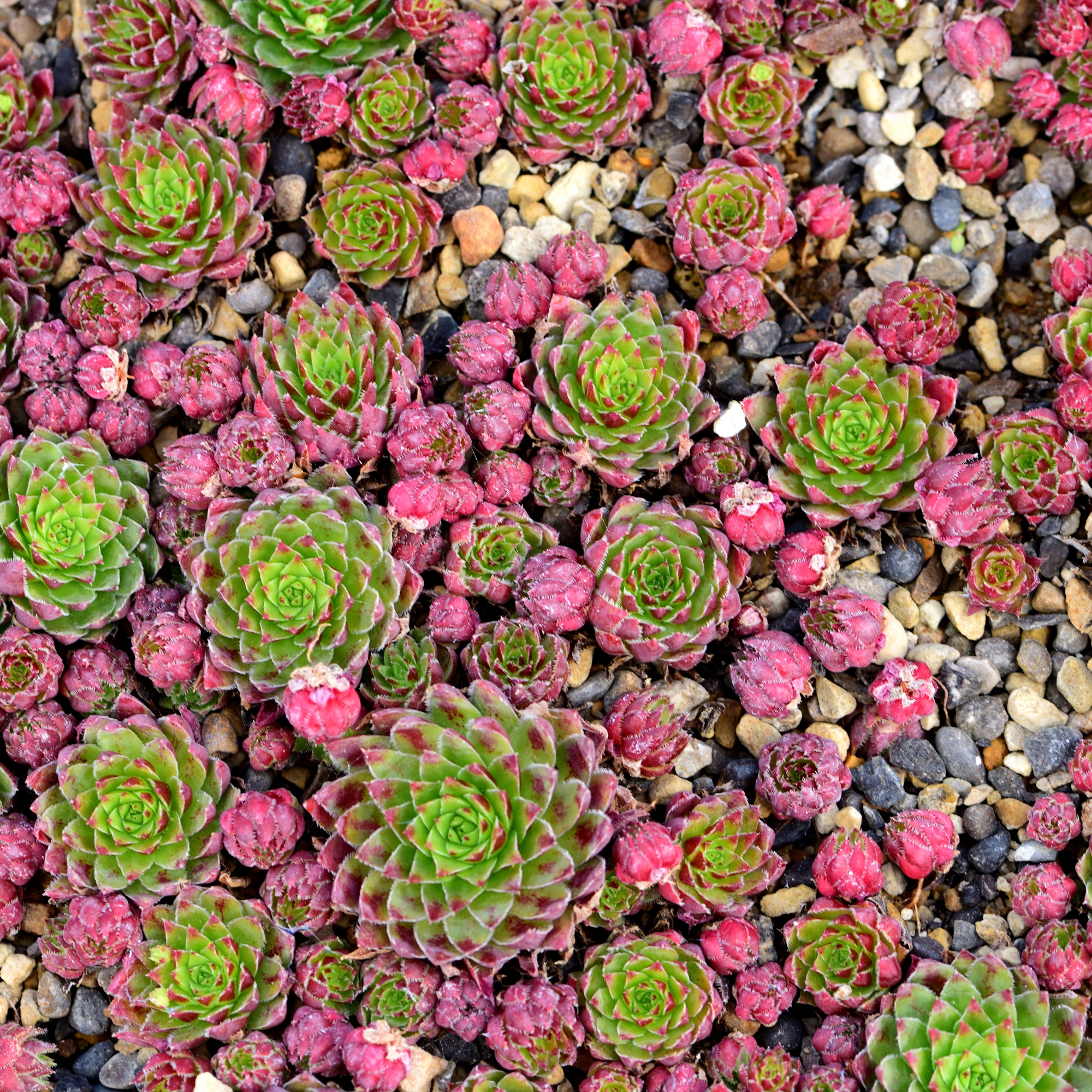
Closely related to Sempervivums, Jovibarba (pick up the Chick Charms Jewel trio from Thompson & Morgan, £26.99 for a nice variety) forms tight rosettes and produces lots of ‘chicks’ around the base. I love using them in cracks between paving slabs or dotted into alpine planters (this alpine planter from Etsy, £28.50 is a lovely size to display lots of succulent varieties).
They have a charming quirk: instead of offsets growing on runners like Sempervivum, Jovibarba chicks roll away from the parent plant – hence the nickname ‘rollers’.
5. Orostachys
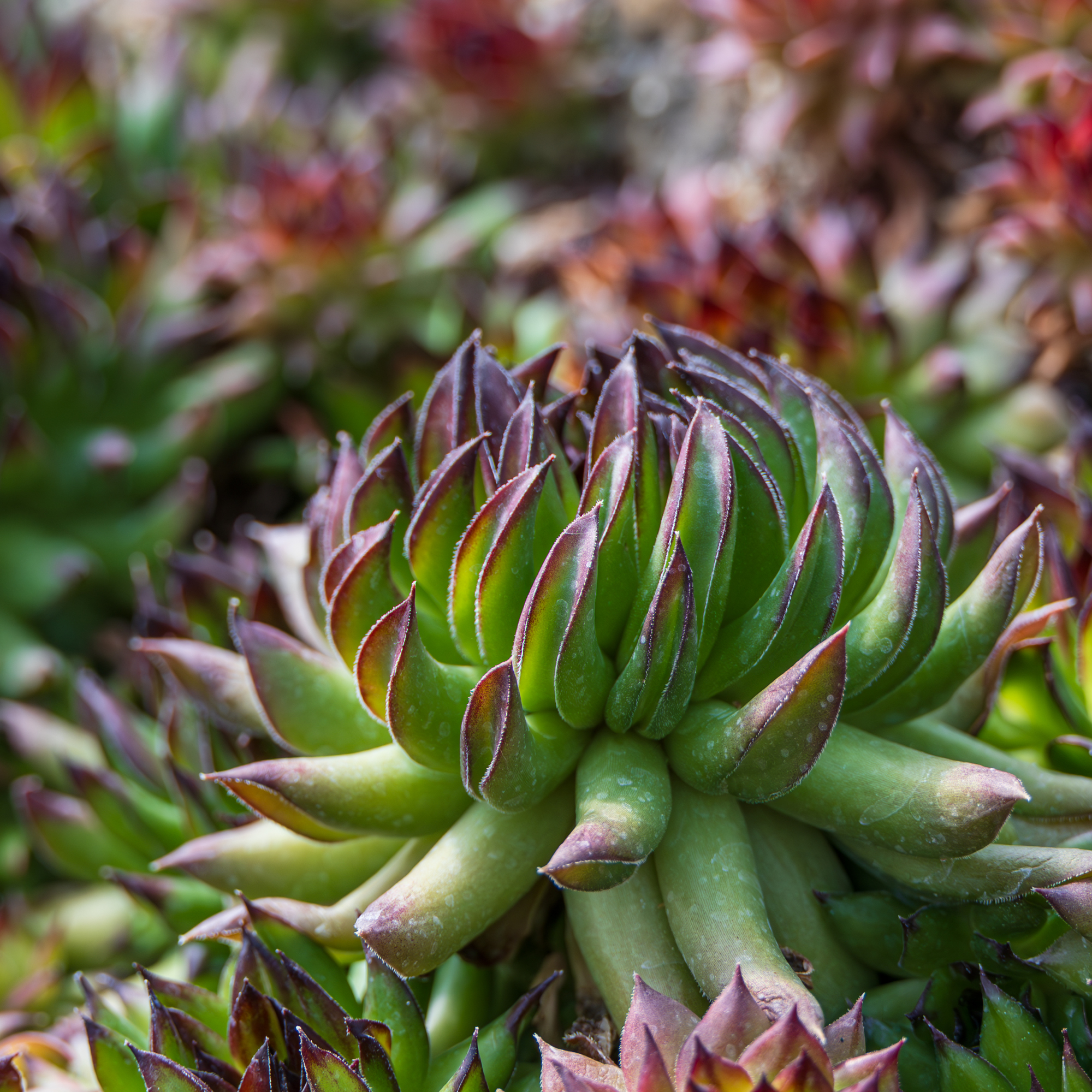
One that’s a bit more unique (but still beginner-friendly), Orostachys (you can pick up a plug plant on Etsy from £1.99) produces tall, cone-shaped rosettes that look almost like miniature pinecones. It’s unusual and sculptural, especially in rockeries or troughs.
Just like its cousins, it doesn’t like sitting in wet compost, so make sure your mix is free-draining. Avoid multipurpose compost, warns Niamh: ‘It holds too much moisture. Instead, use John Innes No. 3, 7.99 for 10L at Amazon mixed 50/50 with grit or perlite.’
6. Hardy Aloe
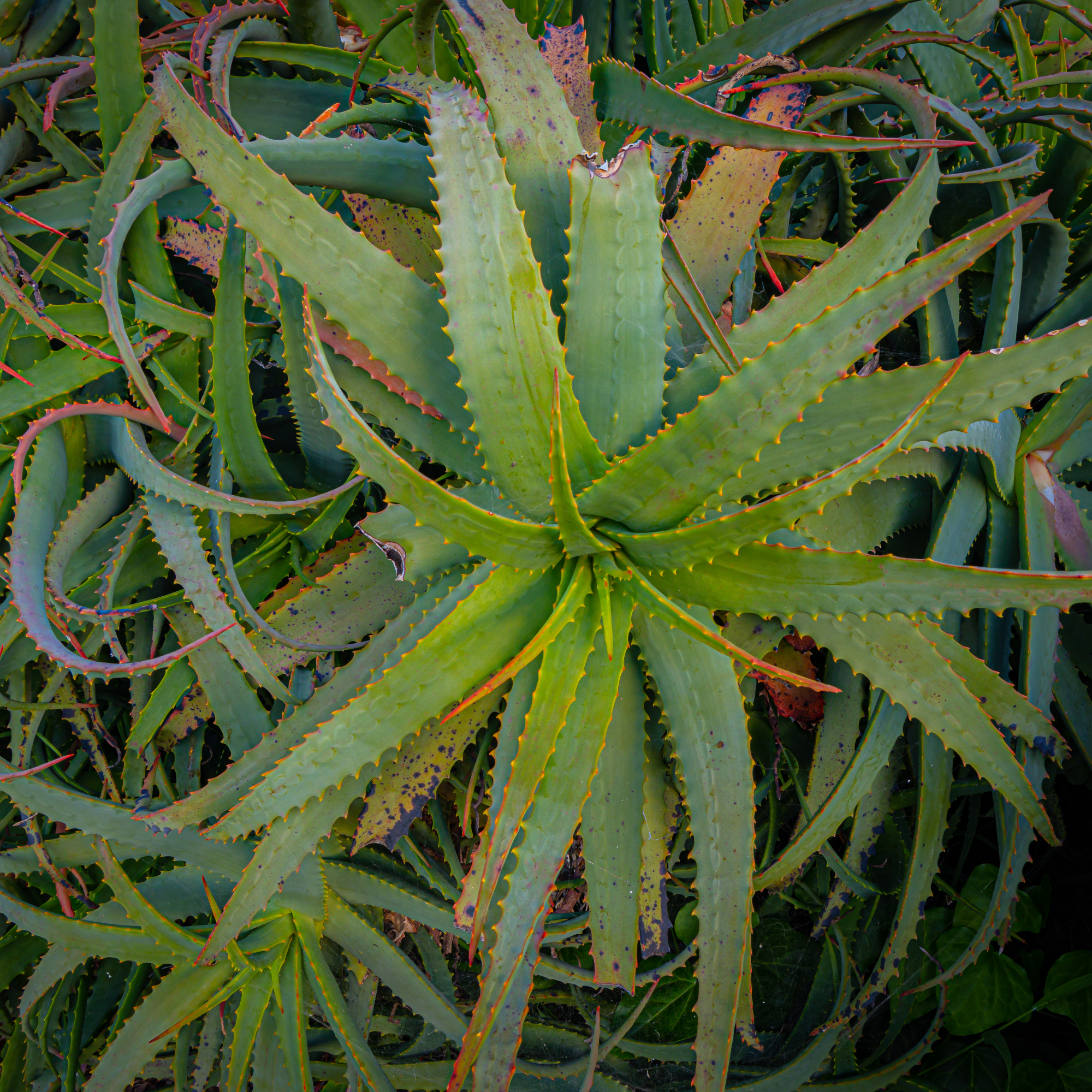
You might not think of aloe as frost-tolerant, but some varieties – like Aloe aristata (available at B&Q, £19.99 for six 12cm pots) – can survive outdoors in sheltered, well-drained spots. I’ve actually been growing mine on a sunny bathroom windowsill as I love seeing the lace-patterned leaves every morning, but will be evicting it to the garden once it gets too big!
They produce striking, spiky leaves and sometimes flower with tall orange spikes – a real architectural addition to your garden.
How to care for outdoor succulents
I asked the experts for their top tips on how to plant and site your succulents.
‘Hardy succulents are brilliant in pots instead of more traditional annual plants,’ say Tom Adkin and Giulia Consolandi of Piccolo Plants Nursery, who specialise in outdoor-hardy varieties.
‘Use a 50/50 mix of compost and grit, and you don’t have to worry about watering. You’ll get a stunning display of flowers that pollinators love too.’
FAQs
What compost do hardy succulents need?
Tom and Giulia Consolandi, co-founders of Piccolo Plants Nursery, suggest a 50/50 grit and compost mix for containers, while Niamh Mullally, from Southwold Succulent Co. recommends avoiding expensive cactus composts: ‘They’re rarely worth the price and not always right for hardy types.’
How should I prune succulents?
Tom and Giulia Consolandi, co-founders of Piccolo Plants Nursery, say there’s no complicated pruning routine. ‘Just trim back overhanging growth when it looks messy. Plus, most trimmings will root easily – just poke them into the soil and wait.’
What position do succulents grow best?
Amy Reardon, horticulturist and Marketing Officer for the British Cactus and Succulent Society, recommends situating succulents in spots that receive full sun throughout the day to help them stay healthy and dry.
‘To grow succulents outdoors successfully, it’s all about understanding both your region’s conditions and the natural habitat of each plant,’ she says. ‘Protecting plants during particularly cold spells can improve their chances against frost damage.’
Hardy succulents are the ultimate low-maintenance option for a sunny patio, rock garden or gravel border. And once you’ve tried them, you might find yourself hooked, like I did. Just beware: collecting them is addictive!
Natalie Osborn began her career in interiors journalism 15 years ago and went on to manage a portfolio of magazines, including the UK's leading kitchen garden magazine, Grow Your Own. Her two allotments (because one is never enough) are home to fruit, vegetables and heaps of cut flowers, ranging from delicious loganberries and burgundy red sunflowers to sweet yellow ball-shaped courgettes (better for dodging gluts) and a veritable farm of dahlias of every shape and size.
